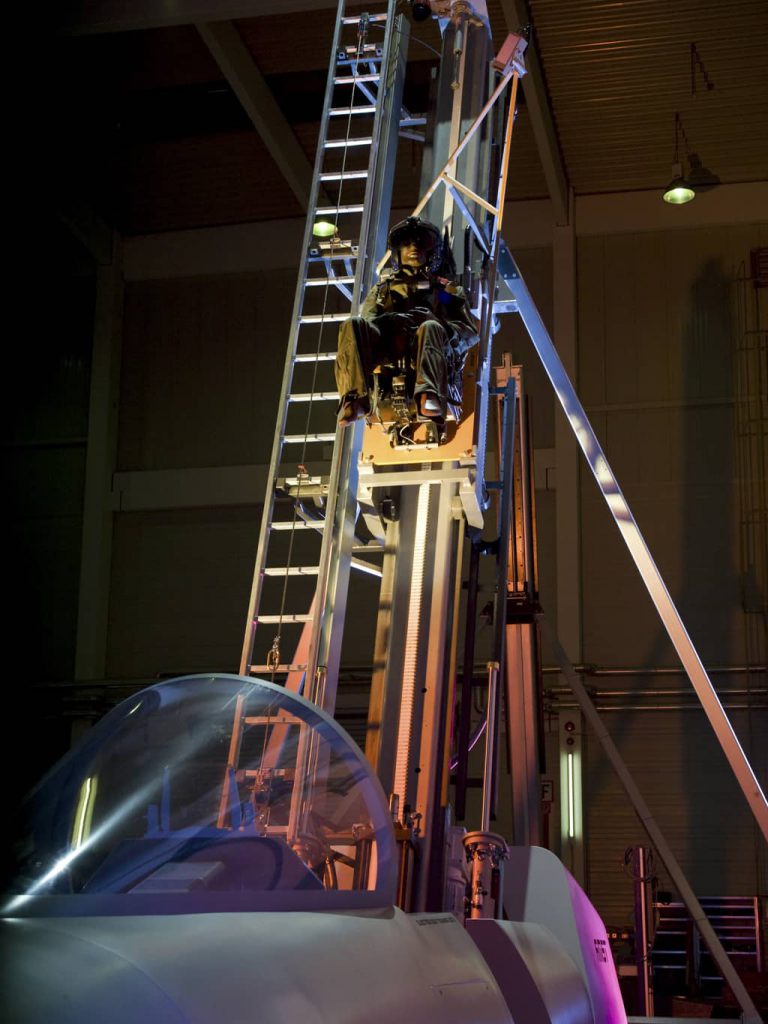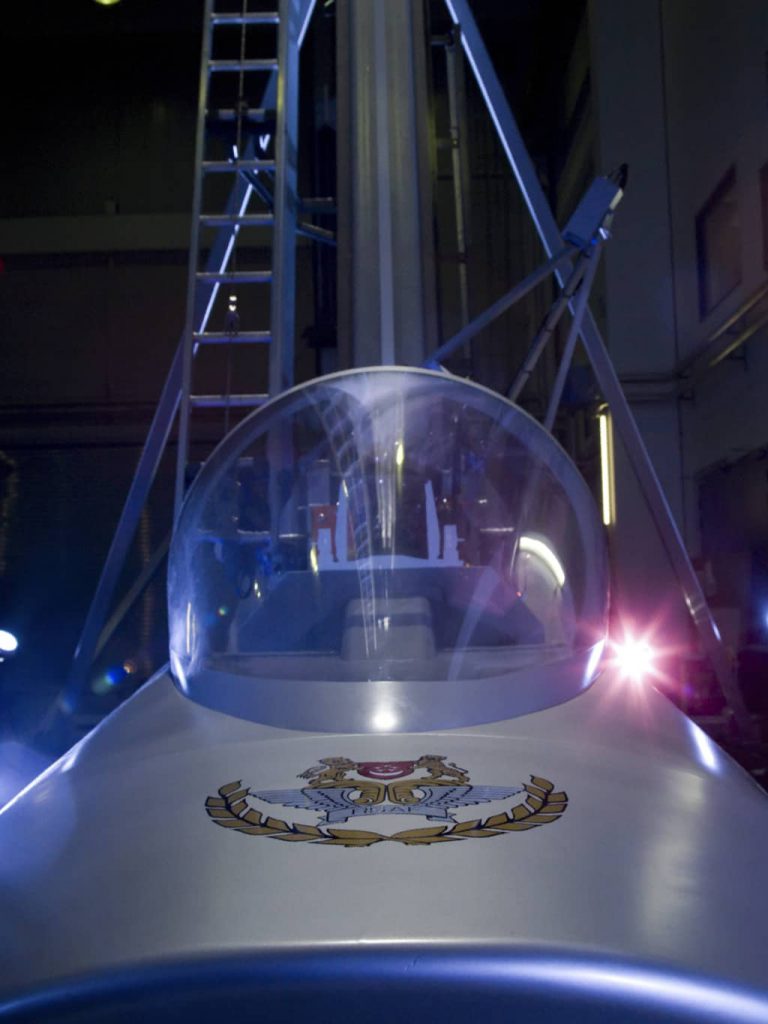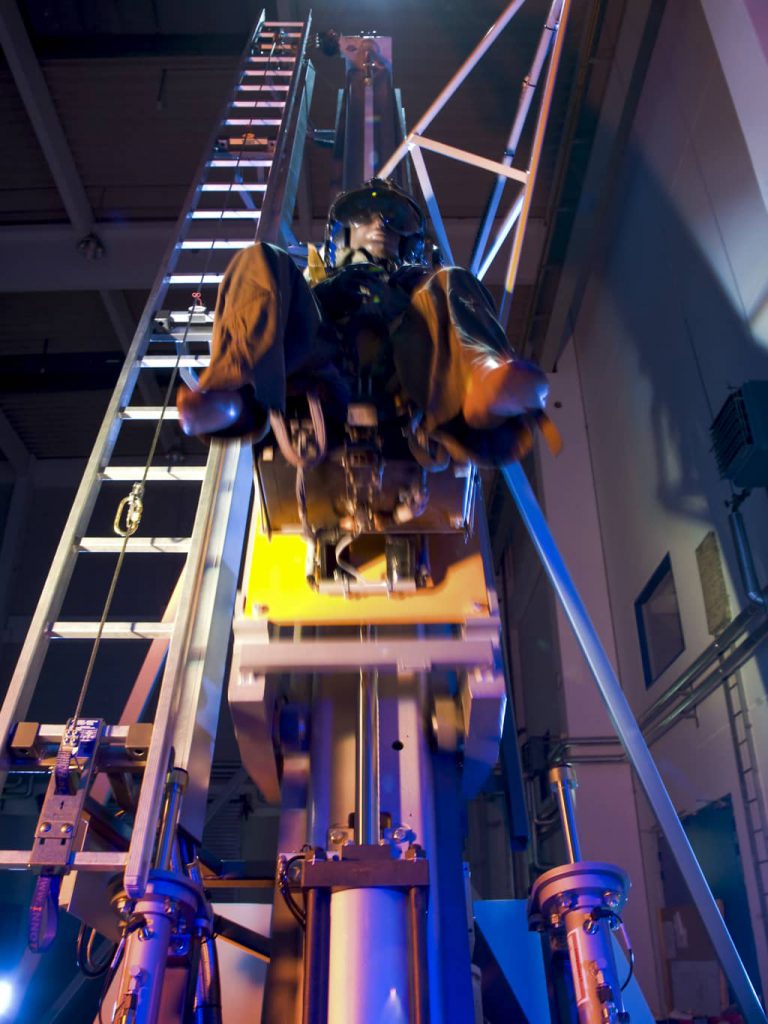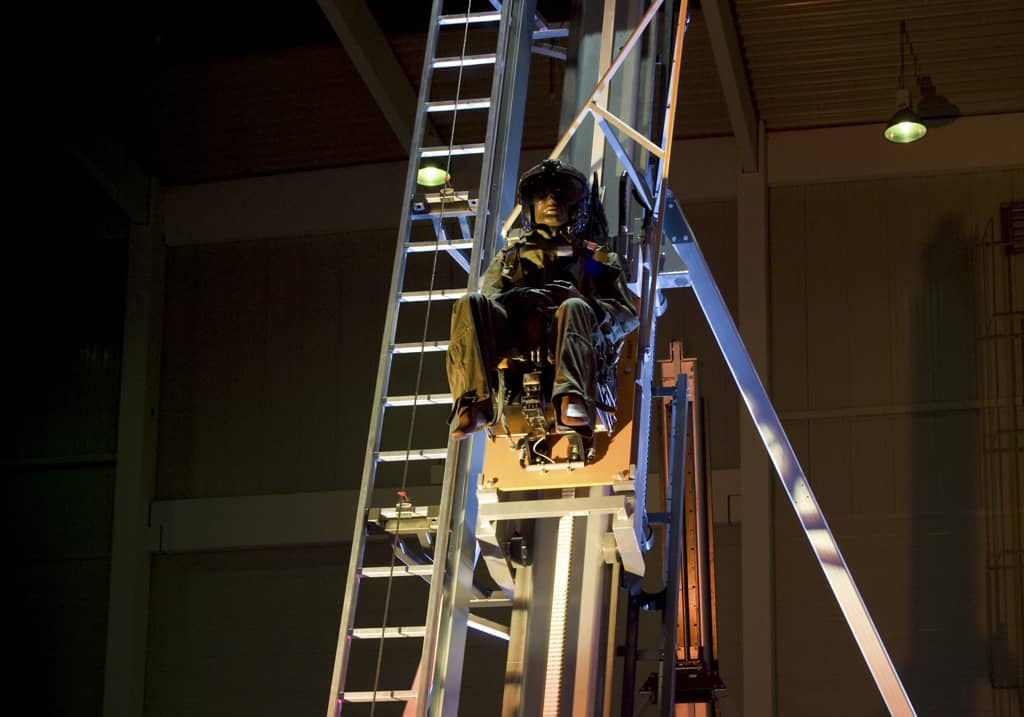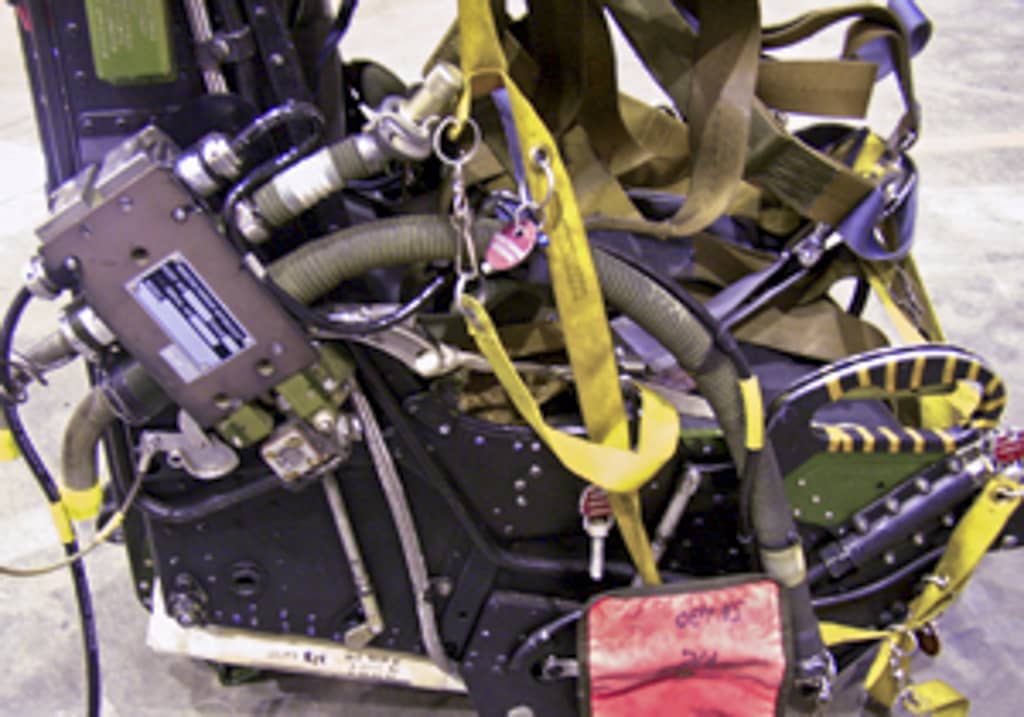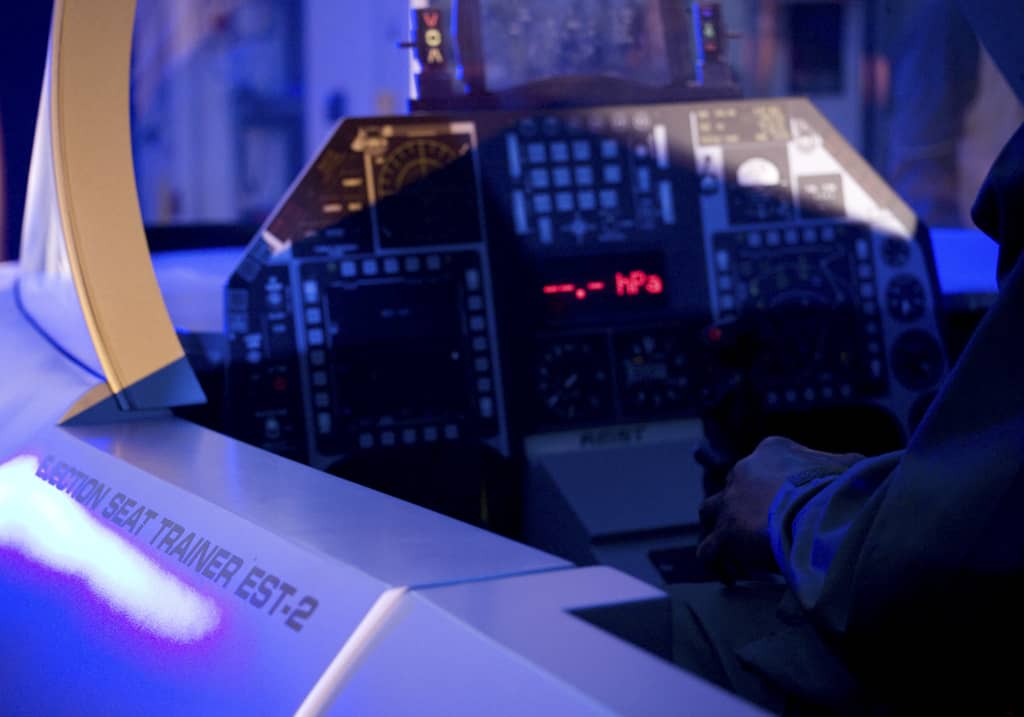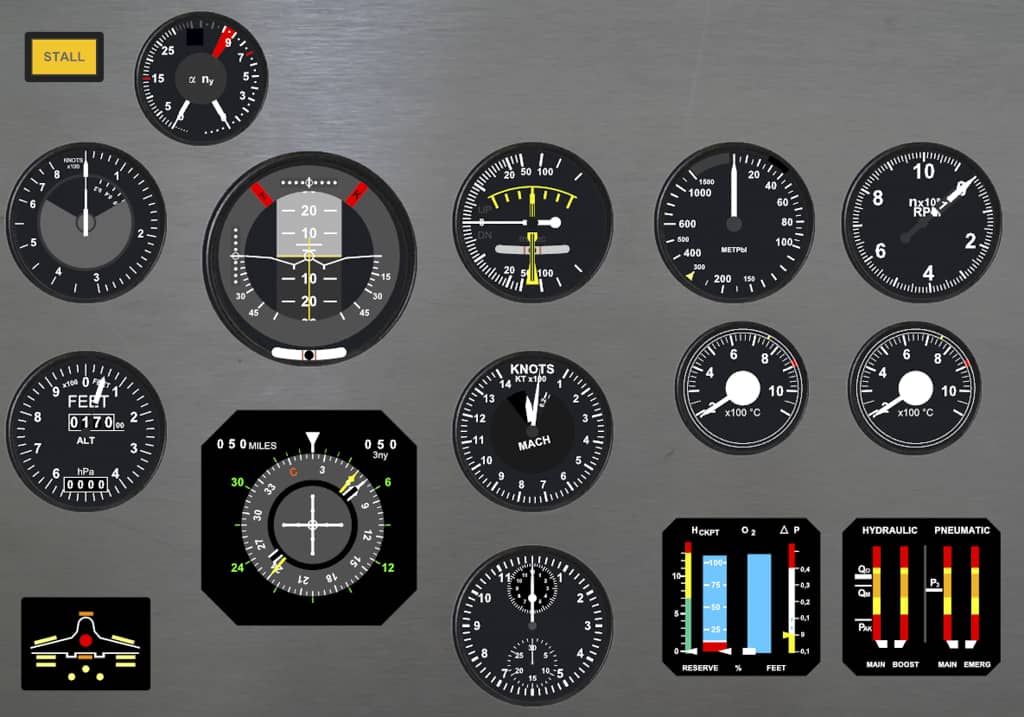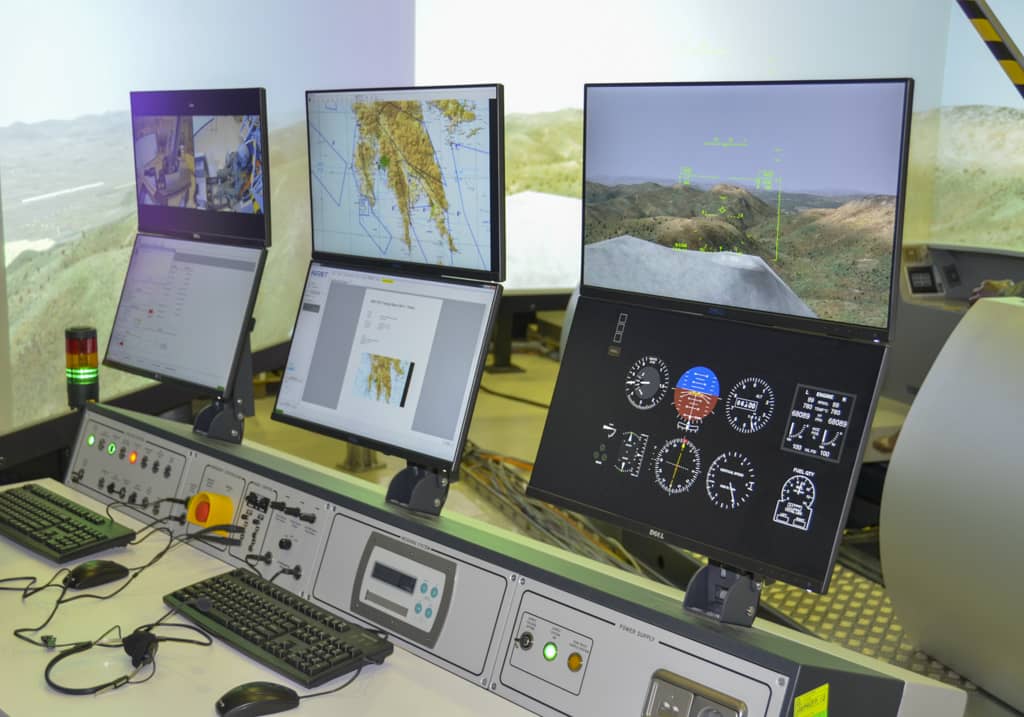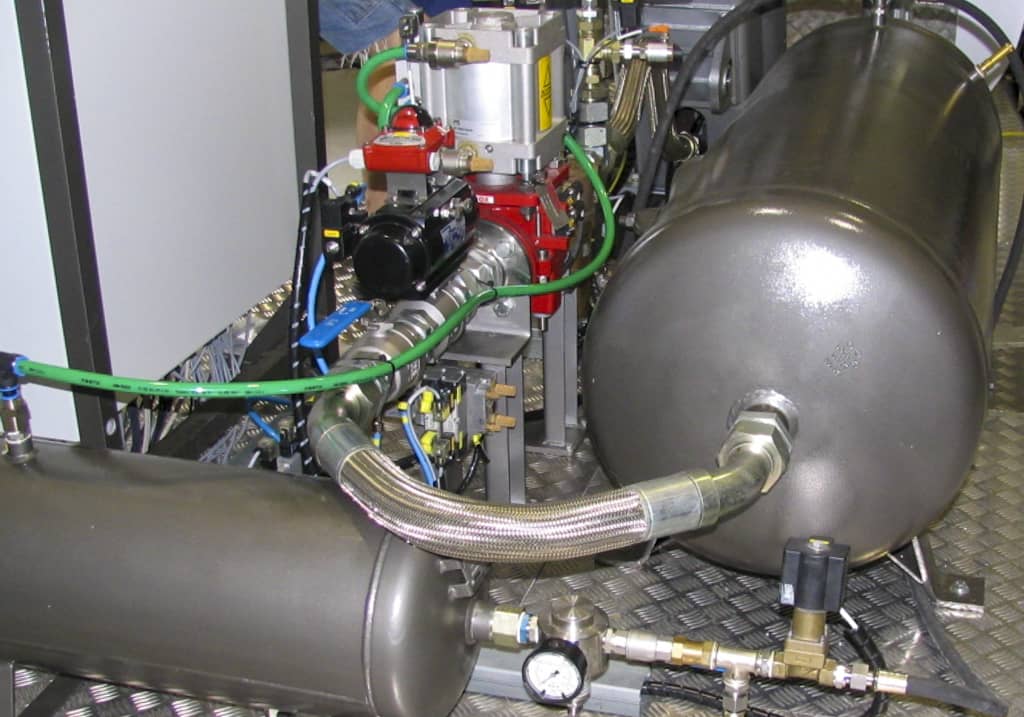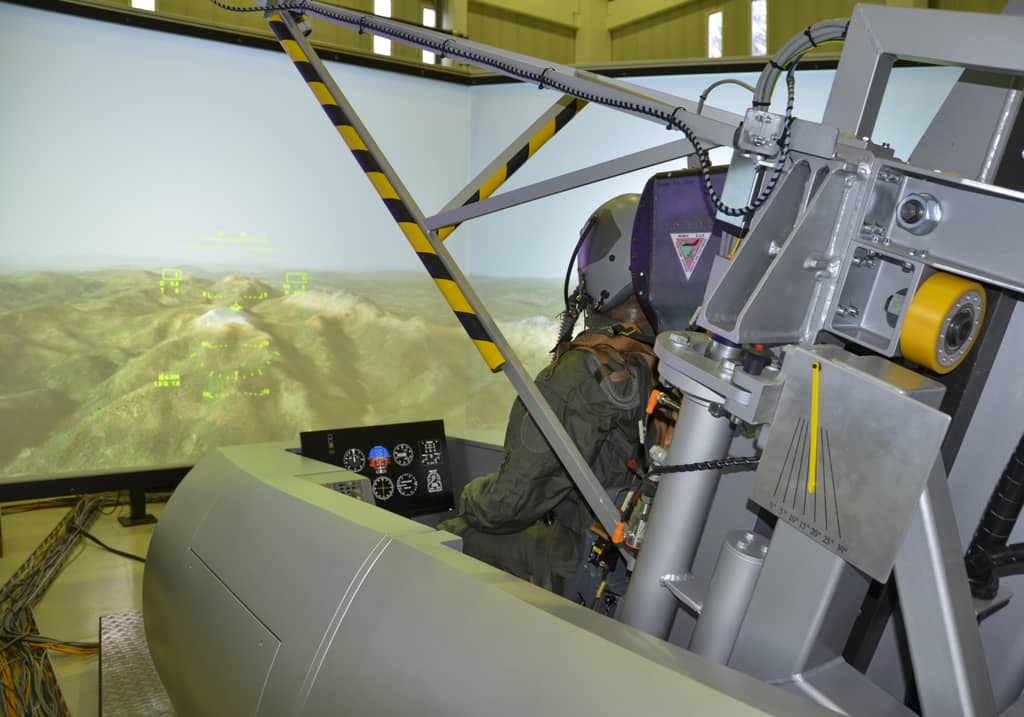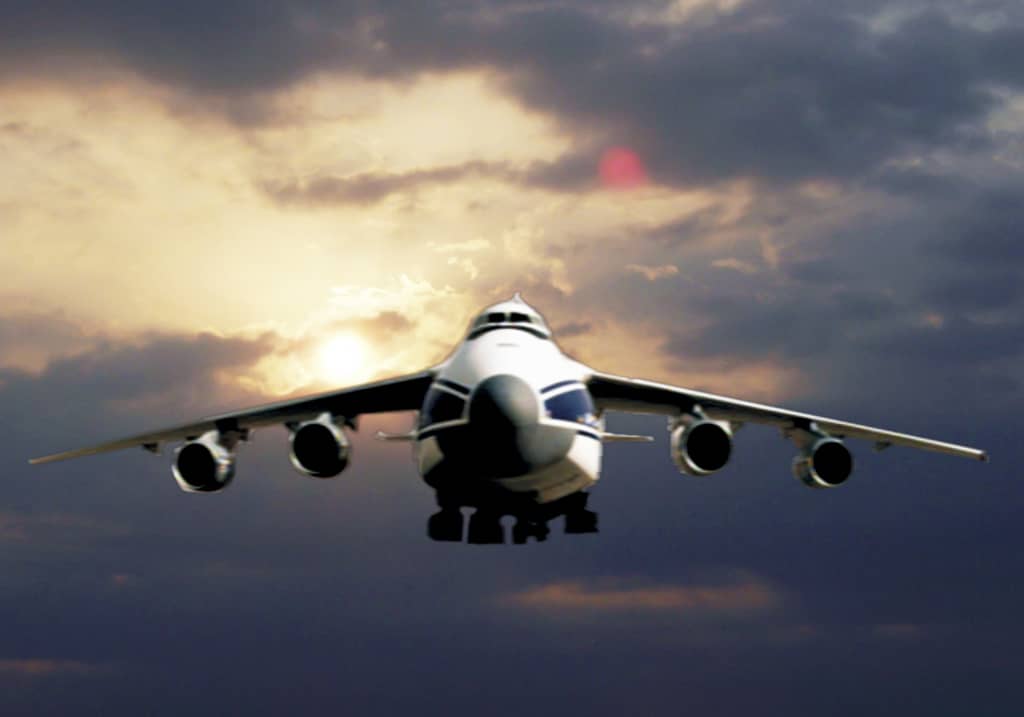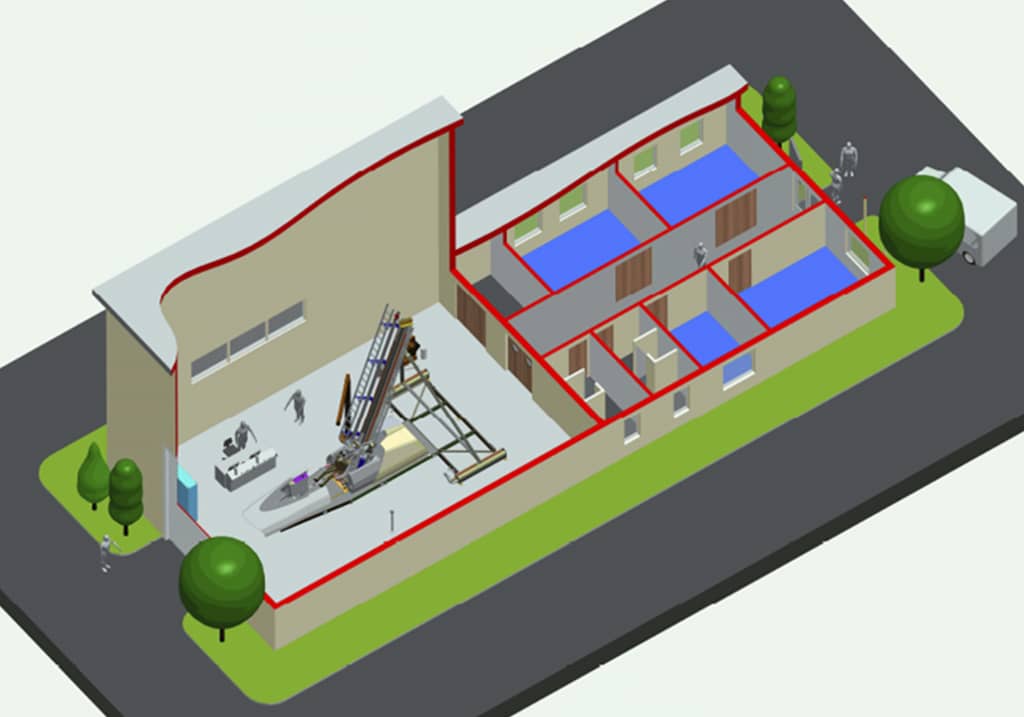Rail Tower – High Strength Steel Mast
The mast is a very stiff steel profile and contains the guide rails for the sledge with the ejection seat. To hold the sledge with the ejection seat after firing and to lower the sledge to the start position, the mast is equipped with a failure safe lowering device. The mast has tilt adjustment. On the top is a safety damper and a distance measurement.
